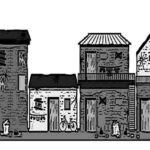FIFTY-ONE years after the birth of Haryana State, on November 1, 1966, it is time to take stock of where it was, where it has reached, and which way is it likely to go over the next two-three decades. When Haryana was carved out of Punjab State, largely based on language, there was political instability, the landscape was deserted and industry was almost unknown. An economic desert of sorts lay in front of the first Chief Minister, Bhagwat Dayal Sharma. The challenges were many; so were the opportunities.
Where has Haryana reached now? Today, it has several pockets of prosperous oases in the midst of the desert. View it from the top, and there is tremendous economic prosperity. Its average annual growth in the past six years was almost 13 per cent. In terms of manufacturing, it has become the preferred destination for domestic and foreign investors in several sectors such as automobile, IT and food processing. It’s one of the most industrialised and urbanised States in India.
One of the best examples of economic success is the creation of globalised regional manufacturing clusters in sectors like automobile. Either instinctively or deliberately, possibly presciently, Haryana realised the economics prescribed by Michael Porter in his The Competitive Advantage of Nations. He noted the “growing importance” of such industrial clusters “in an increasingly complex, knowledge-based, and dynamic (global) economy”. Today, the State houses domestic renowned auto-makers like Escorts, Eicher and Munjal, and global ones like Suzuki, Mitsubishi and Yamaha.
Will to power and change: In one line, it can be said that the Haryanvis used a combination of political and social will to transform their State. None of this was possible without its leaders. As is true globally, and for India, the destiny of a nation, state or region, is determined by its political heads. It is decided by the personalities, who possess the “Will to Power” and the “Will to Transform” in an extreme form. It was the sons, the several lals, of Haryana, who brought in economic prosperity.
Fried rich Nietzsche was not talking about such people when he wrote, “Every specific body strives to become master over all space and extend its force (its so-called “Will to Power”) and to thrust back all that resists its extension. But, it continually encounters similar efforts on the part of other bodies and ends by coming to an arrangement (“union”) with those of them that are sufficiently related to it: thus they then conspire together for power. And the process goes on….” What Nietzsche failed to recognise were the exceptions, the ones who proved his rule. Such towering personalities take the “Will to Power” to another dimension. They sometimes transcend the conspiratorial subtexts and they break the ongoing process with creative and development-linked disruptions. In the case of Haryana, such individuals included Chief Ministers such as Bansi Lal, Devi Lal, Bhajan Lal, Omprakash Chautala, Bhupinder Singh Hooda and Manohar Lal Khattar.
Apart from their individual and specified traits, these leaders signified a larger overriding political change. Although the first Chief Minister Sharma was a non-Jat, most of the subsequent were Bagris, who hailed from the Bagad belt of Bhiwani, Hissar and Sirsa. The three famous Lals, Bansi, Devi and Bhajan were from there. Hooda was the first to break this hegemony.
Khattar completed the ironic political circle by becoming the second one to break the hegemony, and become a non-Jat CM. The political power has, for now, shifted from the Bagar belt. This has thrown up new challenges for Khattar, his BJP party and its ideological umbrella organisation, RSS, as well as the State. The Jats who will never accept his leadership are a force to reckon with in almost half of the State assembly constituencies. The non-Jats, who Khattar belongs to, are prominent in the others.
Individual interests and State’s vision : The real transformation of Haryana actually began in the 1970s when Bansi Lal was the CM. He was a rustic politician but was clearly result-oriented. He was the ‘development’ visionary, who knew what it meant, required and took to change the agrarian economy. If he can be defined by one word, it has to be Maruti, now Suzuki, the Japanese auto giant. The project to make the small car, people’s car, cheapest car was obviously the dream of the late Sanjay Gandhi, son of the late Indira Gandhi. So, this Lal deliberately joined hands with him. Bansi Lal not only initiated MARUTI car project but was pioneer in developing agrarian infrastructure of the state on top priority. His lift irrigation initiative is still a milestone not only in Haryana but in India.
The Maruti car revolutionised transportation ; it lifted up the aspirations and desires of the then fledgling middle class across India; it was the first move in the anticipated or unexpected quest to create globalised regional clusters. When he came back to power, Bansi Lal was no longer Haryana’s ‘lal’. He was caught up in the shenanigans of coalition politics, was unable to cozy up to the Centre because of political changes, and spent most of his time in the creation of his political heir apparent, Surinder Singh.
Throughout his life, Devi Lal remained a leader of the farmers, whose rise and fall was determined by the existing political circumstances. He continually remained an agitator, but, unfortunately, knew little about governance. When his sons, Omprakash Chautala and Ranjit Singh, grew up, they captured Devi Lal’s two lives. The former took over his father’s politics, and the latter ruled over the home. Caught between governance and emotions, Devi Lal gave in to the latter.
When Chautala came to power, minus his father, his interest was limited to the collection of funds. Money became the main governance mantra, as the trio of Omprakash, and his two sons, Ajay and Abhay, wooed colonisers (with dreams of setting up fresh urban centres like Gurgaon (now Gurugram), industrialists (who bought into the concept of Porter’s clusters), and anyone else who wished a favour. Without a specific vision, money talked, money decided and money ruled.
Bhajan Lal was the true businessman-politician ; he would promise everyone, deliver some, but not annoy anyone. He was the typical turnkey CM. If someone, an individual or an institution, had a demand or wanted something, the CM would approve it without a thought to an overall blueprint. However, there wasn’t any perceptive and planned development in Haryana. The State swung between the commands of those who were close to Bhajan Lal.
For a decade, Bhupinder Singh Hooda behaved like a coloniser-turned-CM. He struck a strong bond with Robert Vadra, the son-in-law of Sonia Gandhi, Congress’ President. Henceforth, Hooda’s was a despotic rule within the party, and within the government. The Hooda-Vadra alleged partnership amassed wealth along with the country’s topmost realtors. This was also when hordes of farmers sold their land, thanks to the realtors who built massive commercial and residential properties, especially in places like Gurgaon. It was the ‘Will to Power’ in its most negative essence.
2014 paved the way for a red-carpet entrance for Narendra Modi, the new Prime Minister. Frustrated, angry and desperate, the people of Haryana voted for the BJP. Modi chose a rank outsider, an unknown non-Jat as the new CM. Manohar Lal Khattar is still a work-in-progress. He still has to be evaluated, although pundits are ready with a copy of the unfilled political report card. However, he is a caught in a Catch-22 situation—between the needs of the RSS, and demands, hopes and aspirations of the masses.
Will of the people: There were two other human energies that helped the CMs impose their wills. The first was the bureaucracy which, in 1966, was new and, hence, young and enthusiastic. Fortunately, despite their eccentricities and tastes, the CM chose their officials judiciously. Without bothering about the consequences, the bureaucrats implemented what was demanded of them—in letter and spirit. They committed a few blunders, but they delivered better than their counterparts in other States.
And then there was the power of the people. Most of us don’t realise the power of the masses in the State, where an ordinary farmer can stand up to a CM. This form of confidence, even dominance, can reflect in violence, vandalism and verbal abuse, or positively in development, prosperity and a culmination of energies that can change the future of a State. It did both over the past five decades. Along with the leaders and bureaucrats, the masses decided their past, as they will do with their future.
Mismatched society: Thanks to its leaders, and their obscure, twisted and manipulative visions, there was a development mismatch in Haryana. The areas adjoining Delhi, and those bordering Chandigarh prospered and developed. But the rest remained steeped in old, conservative and traditional socio-economic morass. A few hours from Gurgaon, in Mewat, or in areas like Sirsa, it is difficult to imagine that one is in 21st century India. Here, the past rules the present; unfortunately, the ugly past.
For example, the State has one of the worst gender ratios in the country, although the new CM Khattar has sought coordinated efforts with neighbouring States to curb infant mortality. The caste equation is strong and embedded, which frequently raises its head in the disquiet between rural and urban communities within the pockets of economic prosperity. It’s a State known for the illogical, even violent, decisions of the Khap Panchayats. In some ways, sections of society are anti-modern, anti-21st century and rooted in the 19th century; these sections are the anti-thesis of any modern, civilised, polite, intellectual and free society.
Not that Haryana’s past is about caste, and illiberal mindsets and attitudes. It’s the same State that is seeped in the values of Arya Samaj and vegetarianism. Its past had glorious, and ever-optimistic, tendencies that were considered more futuristic than the other States. It borrowed the best from Punjab, of which it was a part until 51 years ago. And it borrowed the best ideals from the ‘Making of This Nation’. Hence, Haryana doesn’t need to change its society; its society needs to remember what it was, where it has reached, and where it wants to be tomorrow.
The problem is that today Haryana is confused. It doesn’t know its future, is unclear about what it wishes to be. Does it want to be a strong agrarian society—it accounts for 7 per cent of the country’s agricultural exports, and 60 per cent of the export of basmati rice? Does it wish to be a fully-urbanised-industrialised society, with all the issues related to poor-rich divide, chaos and power struggles? Does it want to be at the cutting edge of technology with emphasis on IT and AI? For Khattar these are the real changes. Haryana today is at the cusp of time, a bridge between the old and new, 19th century mindset and 21st century ideas. Its past achievements cannot be negated or dismissed but its future hangs in a balance. From here, it can take off on to a new dimension or it can continue at this pace, forever struggling with the battles between the past and present. Good Luck to Haryana.
ANIL TYAGI
editor@gfilesindia.com



























































